Let’s rewind back to the early days of our 50 state road trip. We set off on January 1, 2018, then a month later we were in Savannah, GA. Shae was out walking Truffles one morning in Forsyth Park where she got chatting to a couple who were also visiting Savannah.
She told the husband and wife about our road trip and blog and he’s been following along on our journey ever since. I’d never met him myself, but we’ve emailed back and forth a few times and he let us know that whenever we visited the Twin Cities of Minneapolis and St Paul that we should let him know as he’d like to give us a guided tour of the Cathedral of Saint Paul (he’s a docent there).
Well, in June we found ourselves in the MSP area and so we reached out to Jim to see about getting a guided tour. We’d left things a little last minute as we weren’t sure which day we’d be able to visit, but he was very kind and flexible and we arranged to meet up one afternoon.
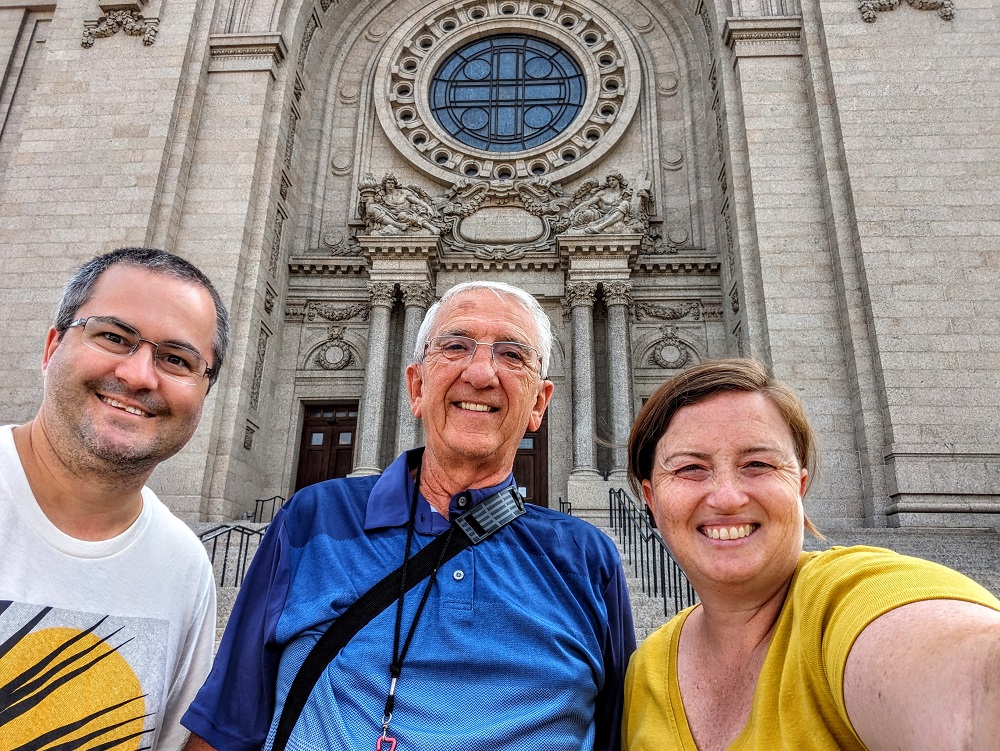
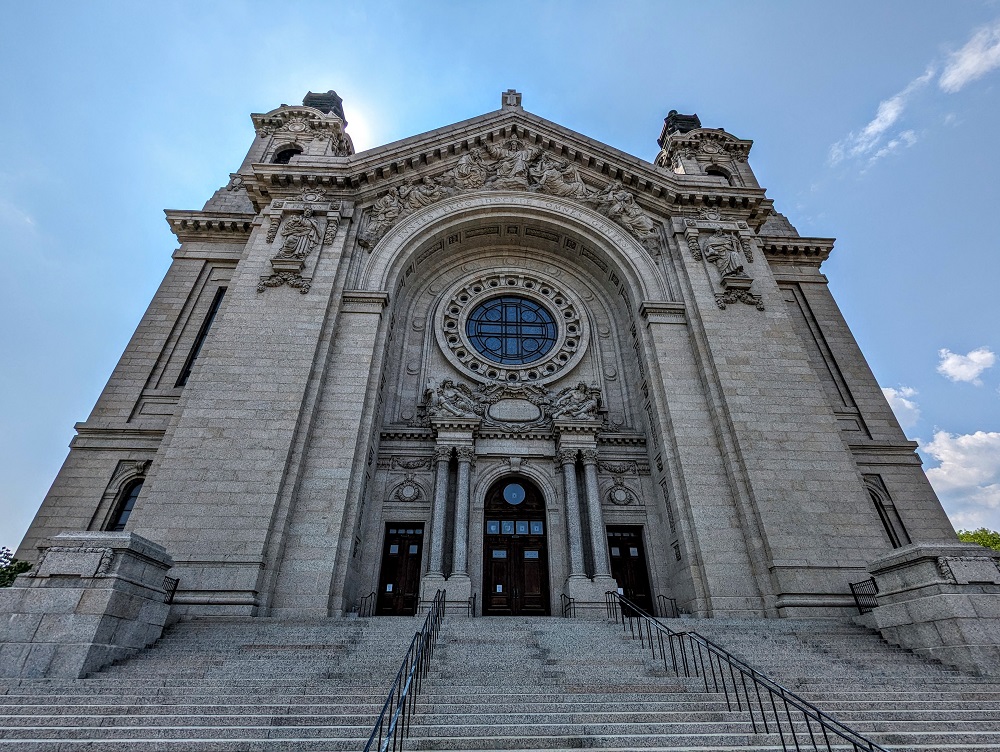
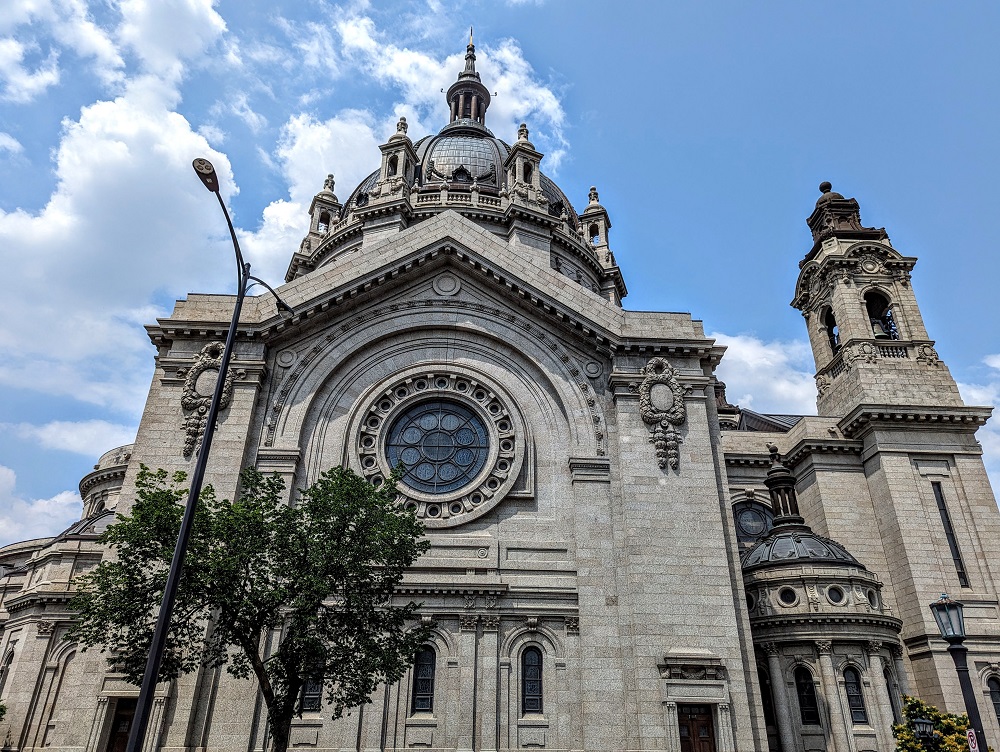
Being from the UK, I’ve visited a number of cathedrals in my life. I was interested to see what the Cathedral of Saint Paul would be like though as it’s a Catholic cathedral, whereas most cathedrals in the UK are Anglican (AKA Episcopalian).
Something that was different from what I’m used to was the age of the cathedral. In the UK, there are many cathedrals dating back almost 1,000 years, whereas the Cathedral of Saint Paul was built from 1906-1915 and so is only just over 100 years old.

The cathedral is 700 feet long and 700 feet high.
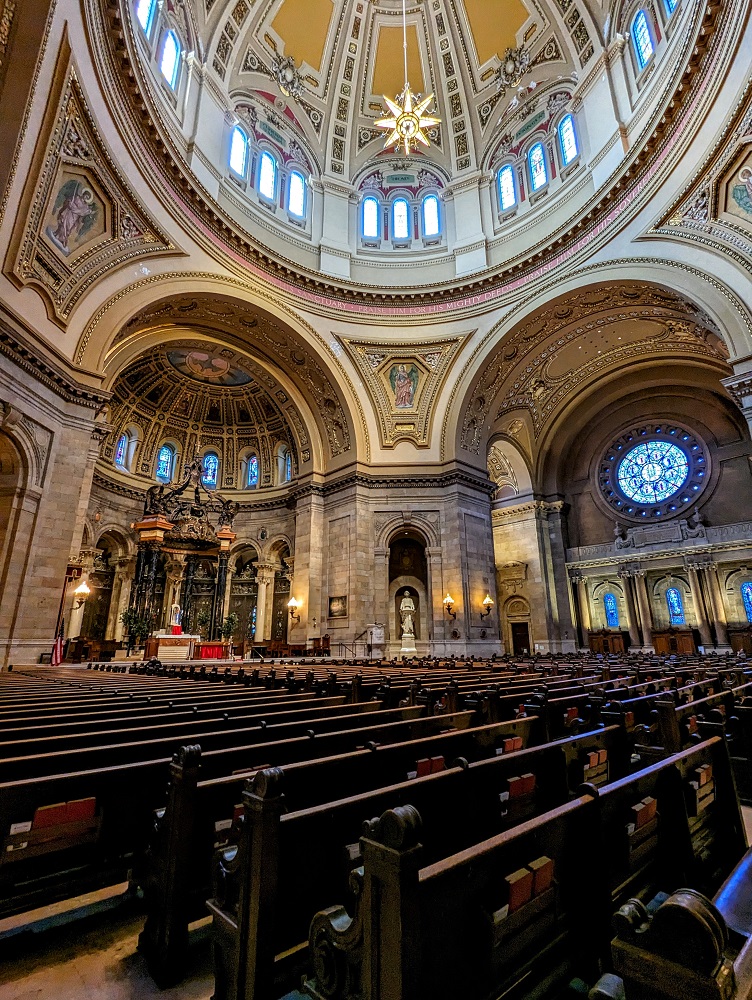
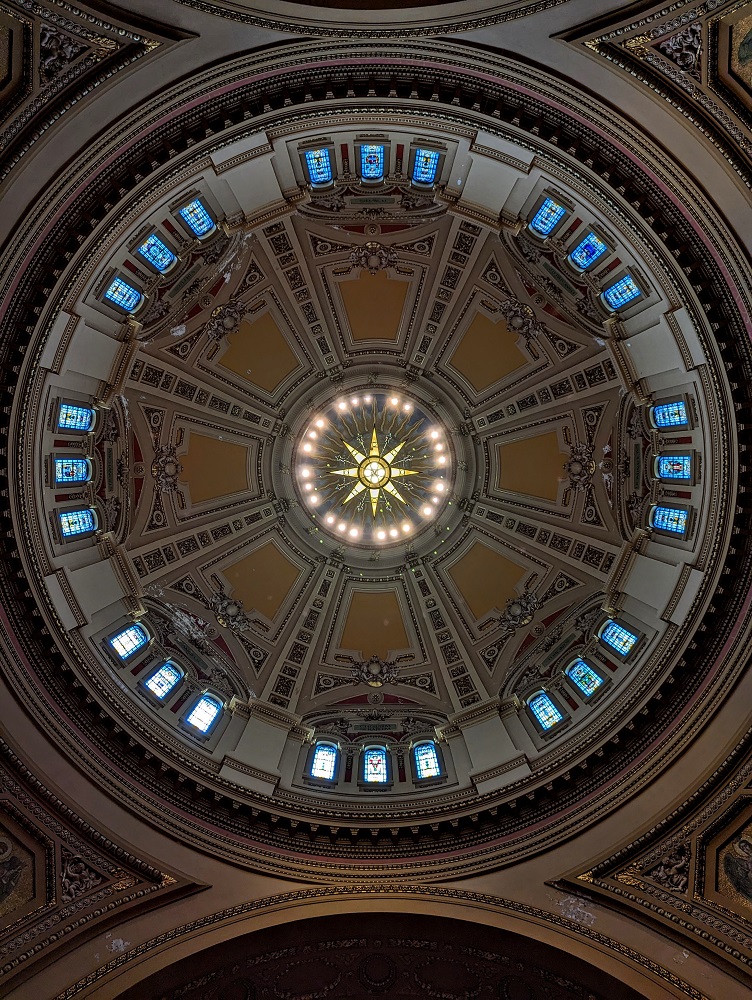
One of the first things I noticed were the organ pipes either side of a stained glass window. My grandad used to play the organ at his church and he had an organ in his home. Whenever we went to visit my grandparents I used to love playing on that organ despite my lack of musical ability (although I can play a mean Do-Re-Mi from The Sound of Music on there 😉 ).
He would’ve loved having the opportunity to play the organ in a cathedral like this.
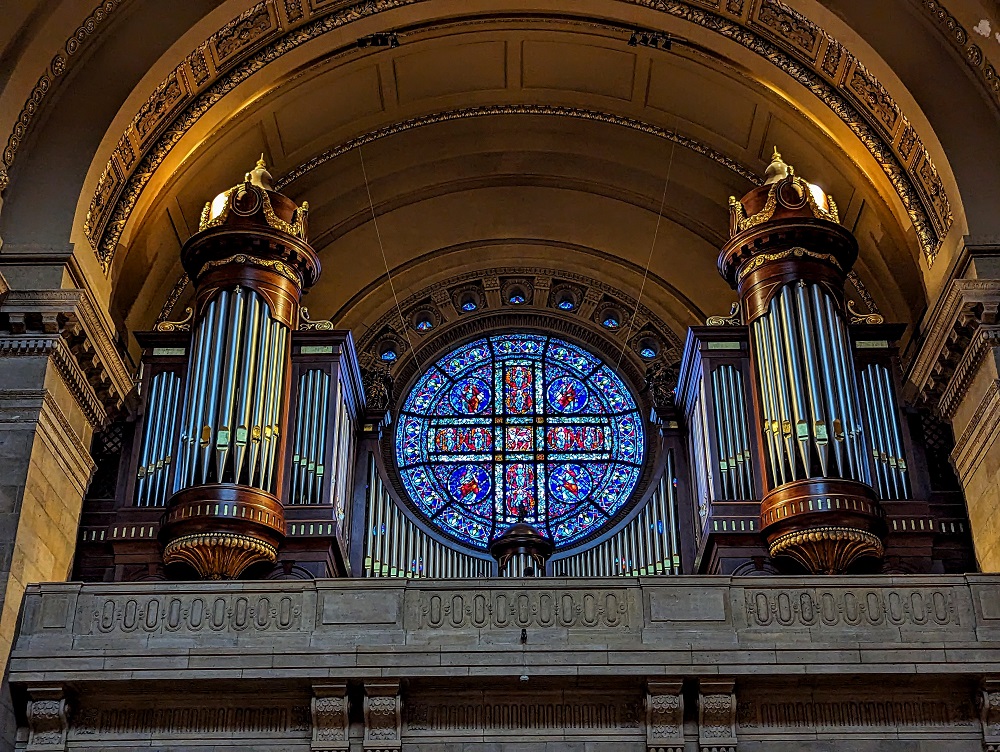
Something that was different from the Anglican cathedrals in the UK is that the Cathedral of Saint Paul has numerous chapels dedicated to different saints all around the building.
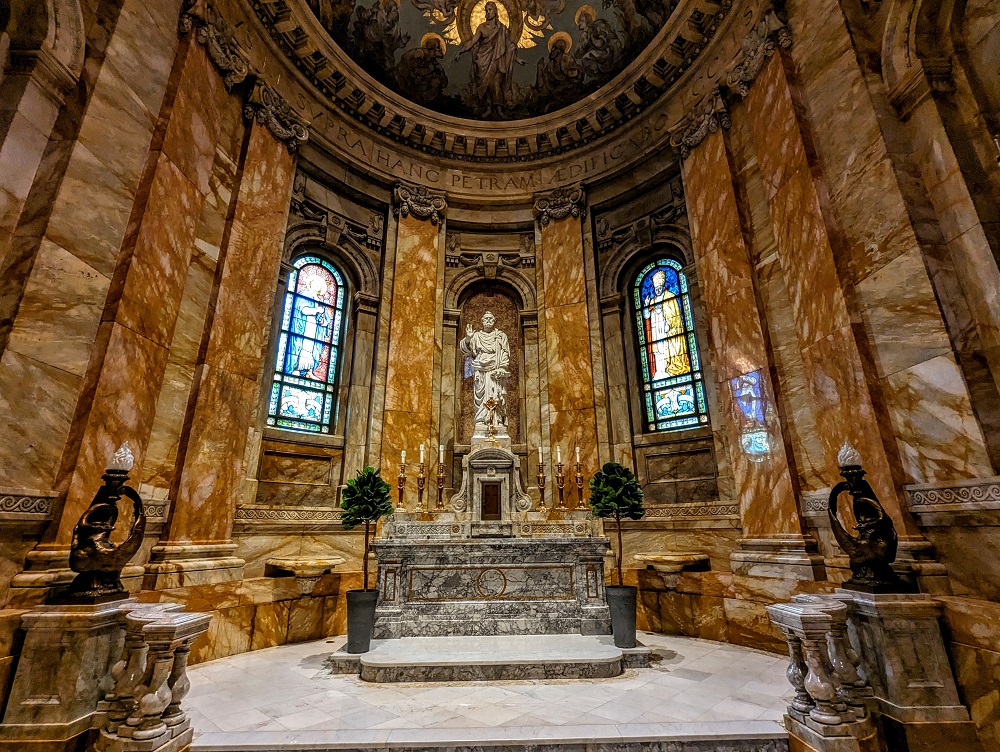
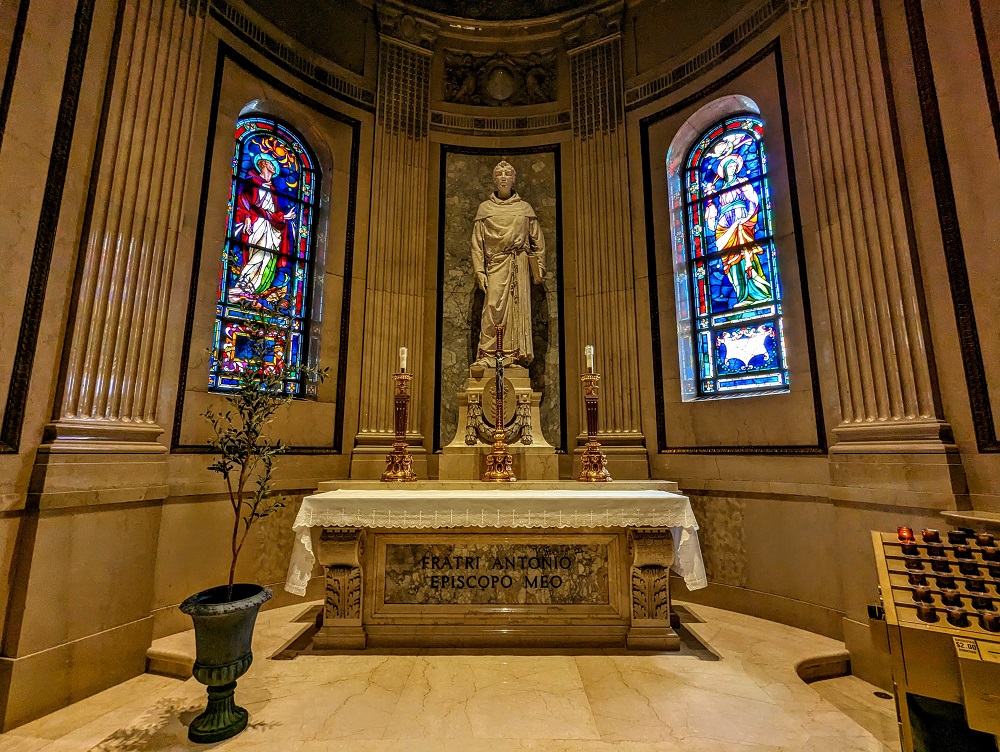
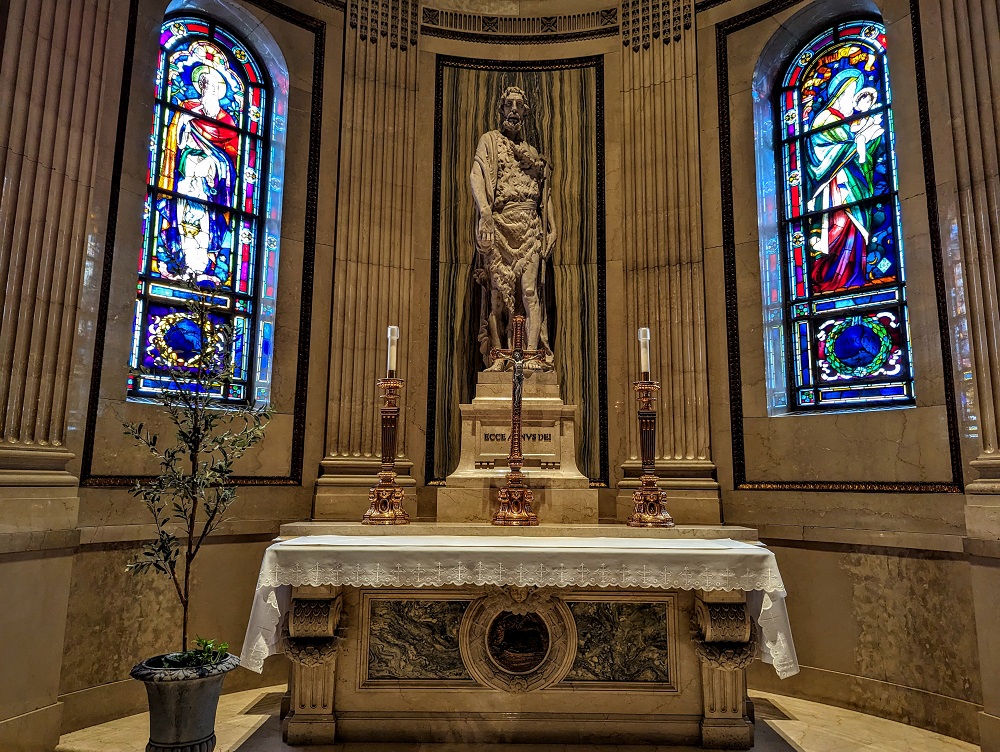
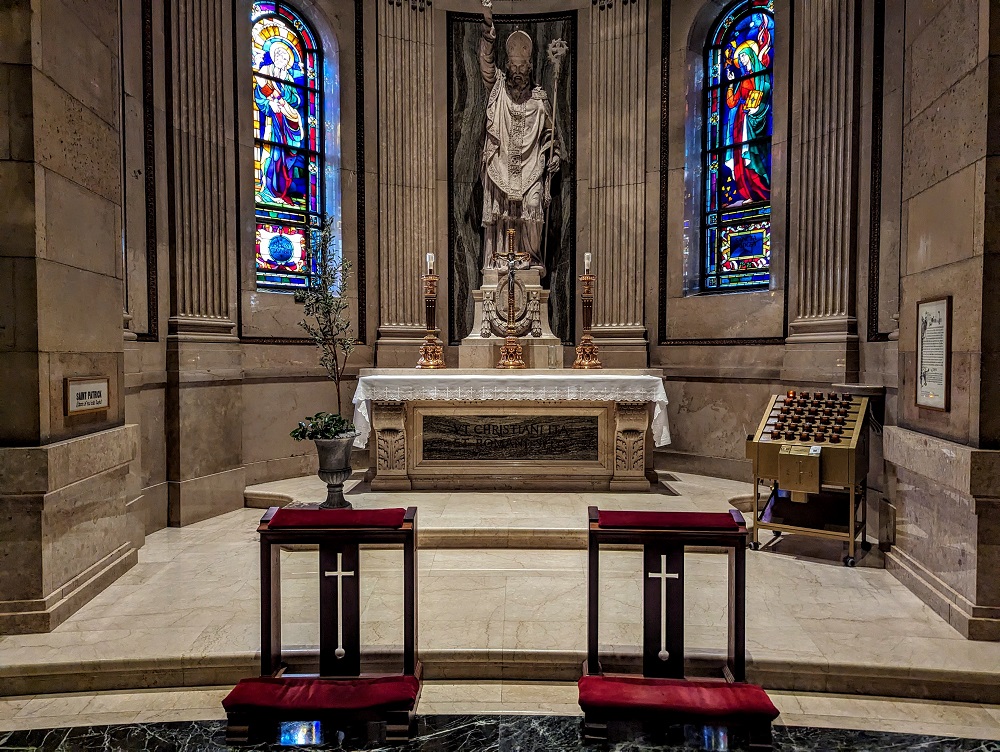
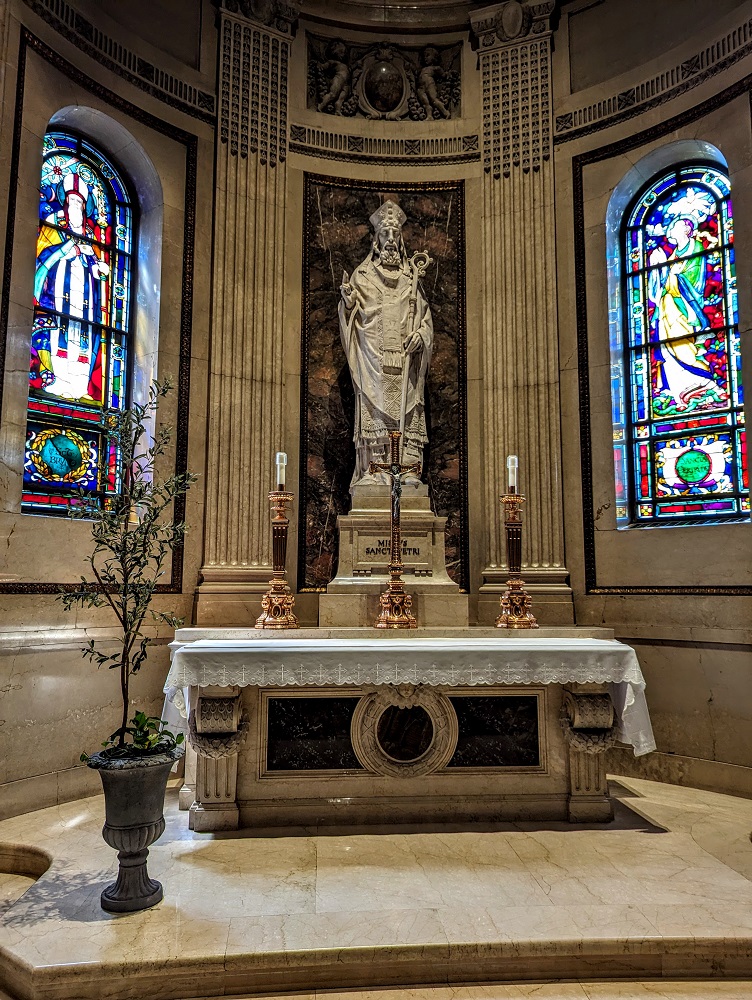
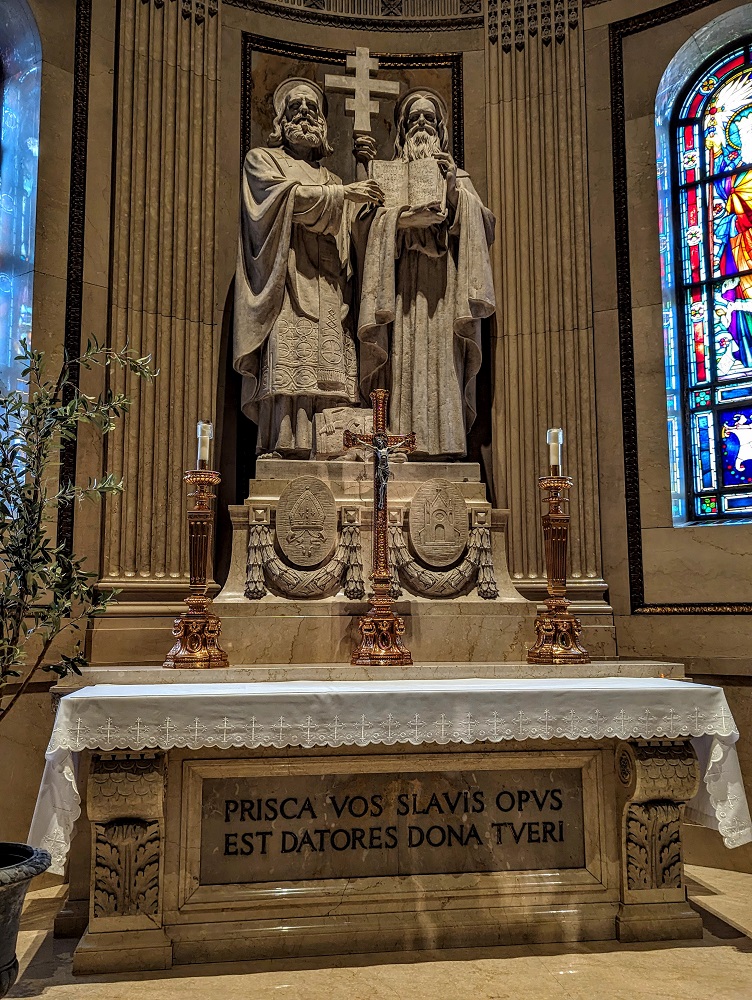
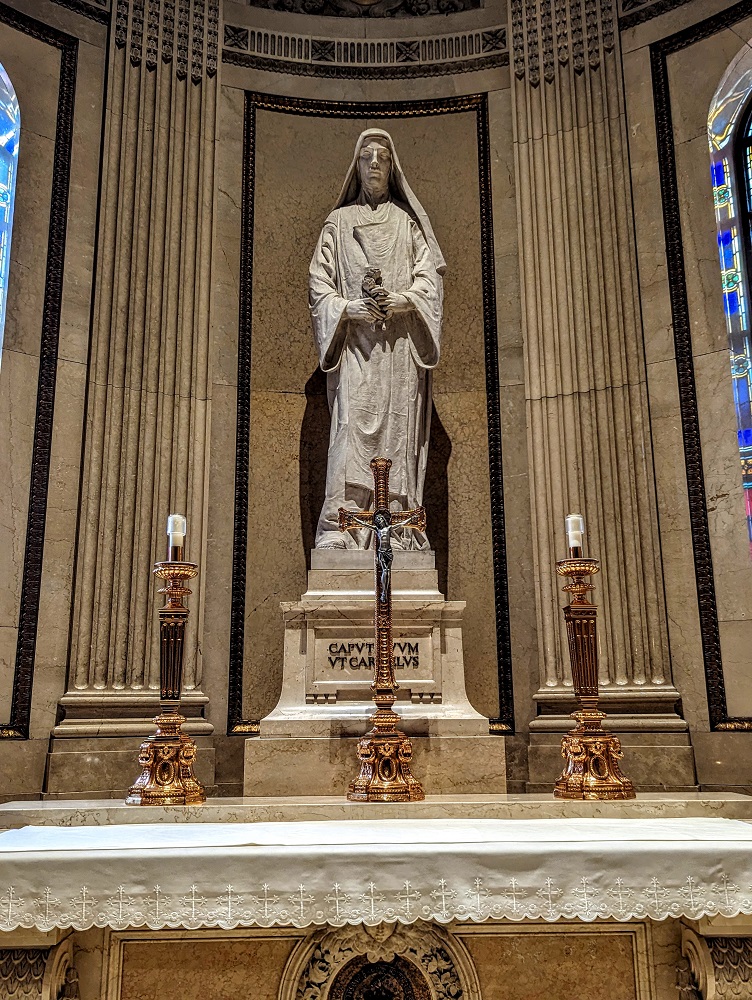
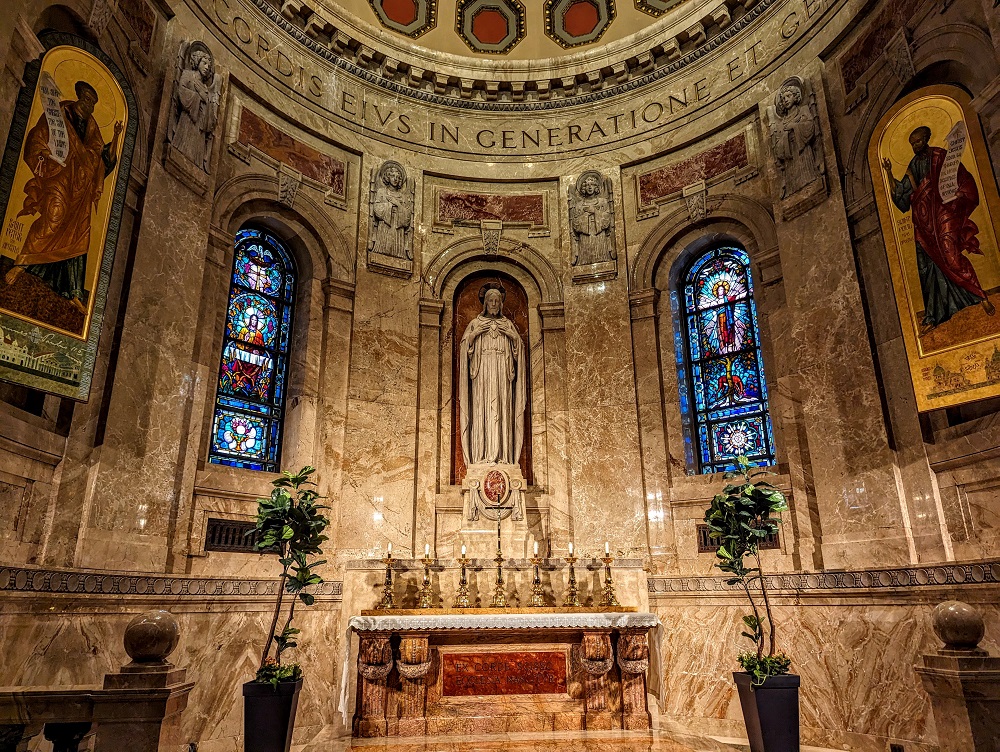
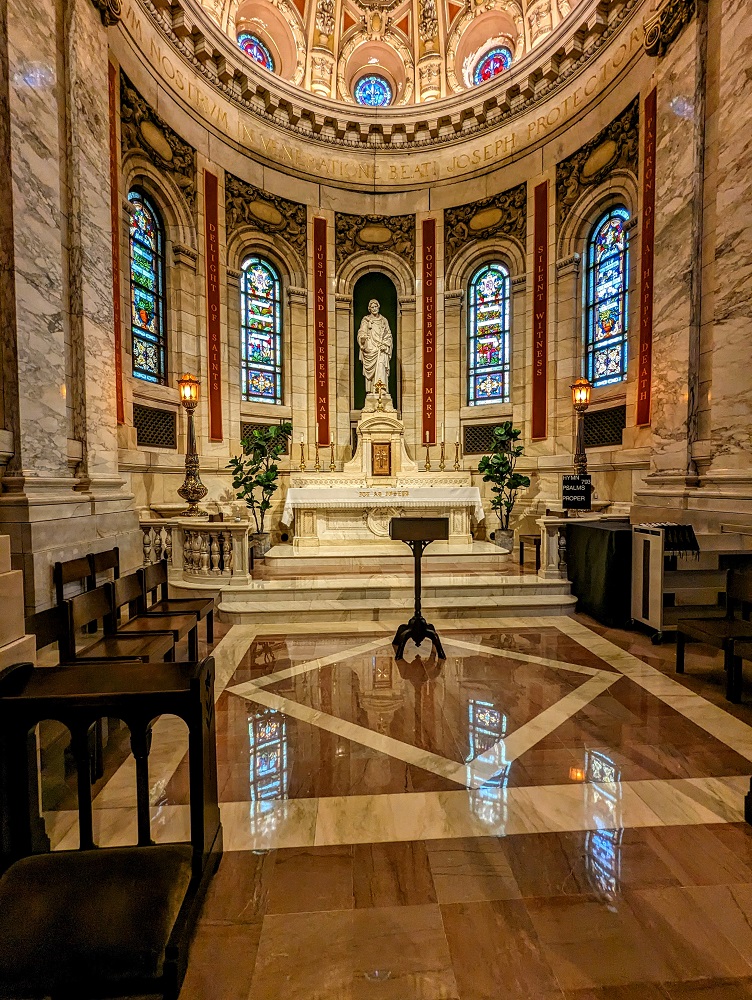
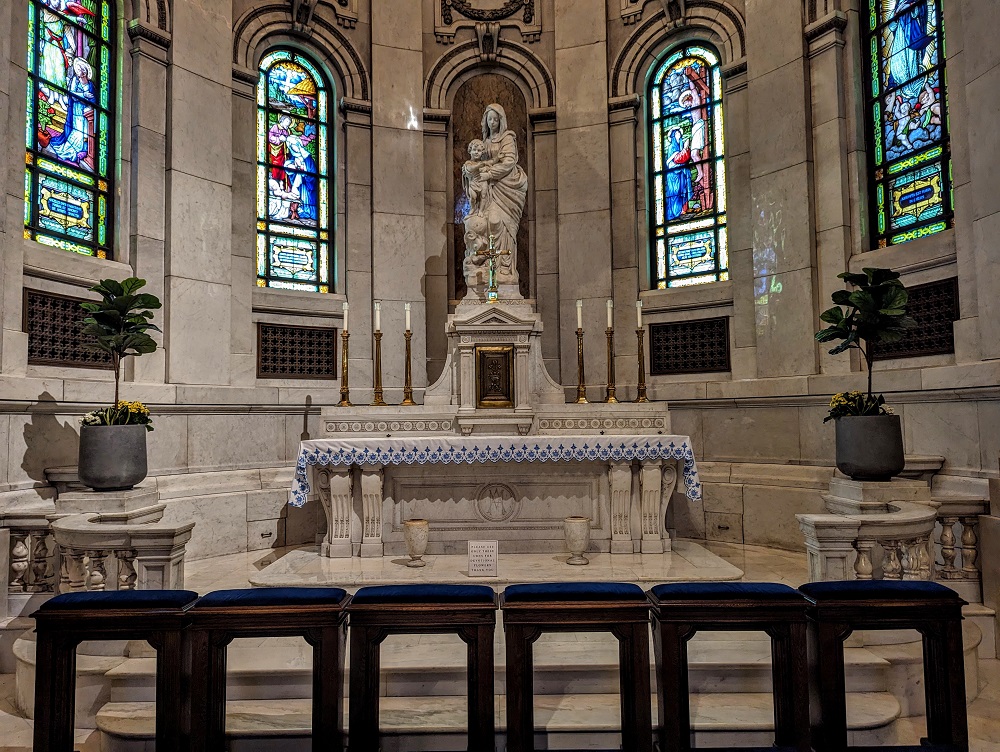
In addition to the statues in the various chapels, in the nave (the main part of the cathedral) there are four statues – one for each of the gospel writers. Matthew, Luke and John are all holding scrolls, while Mark’s statue has him holding a book as his gospel is the shortest.
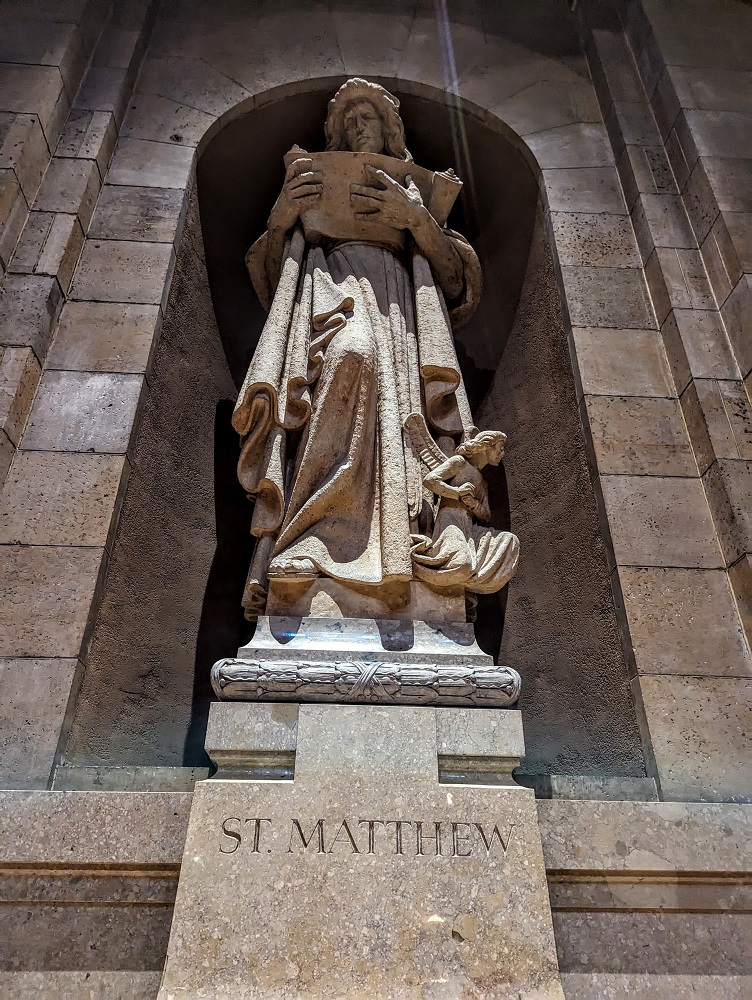
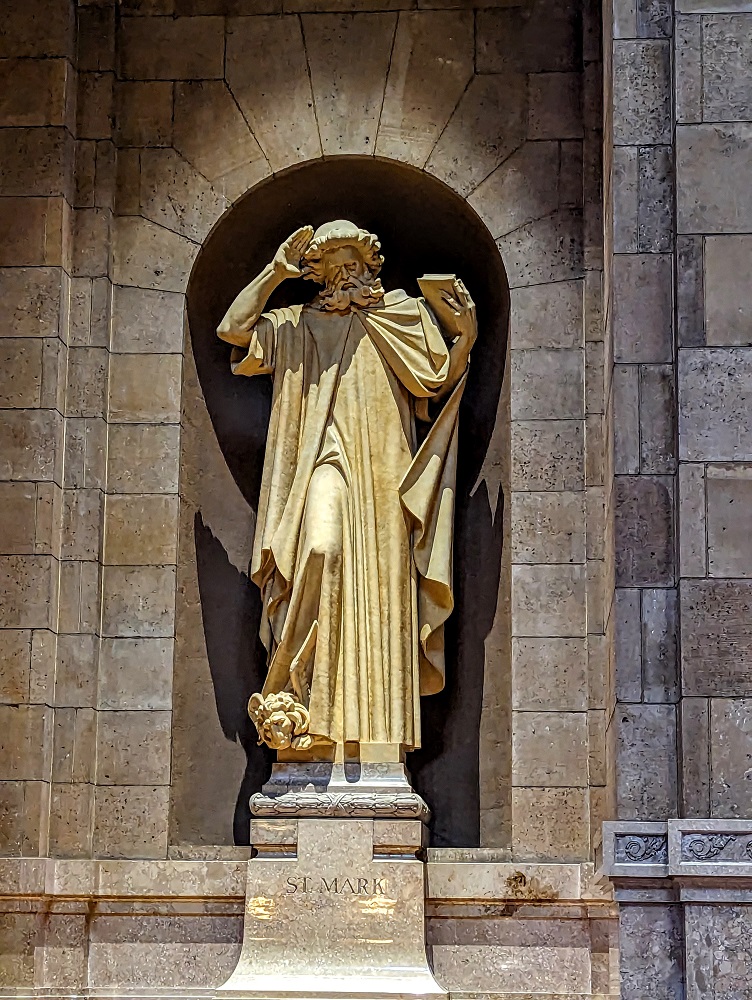
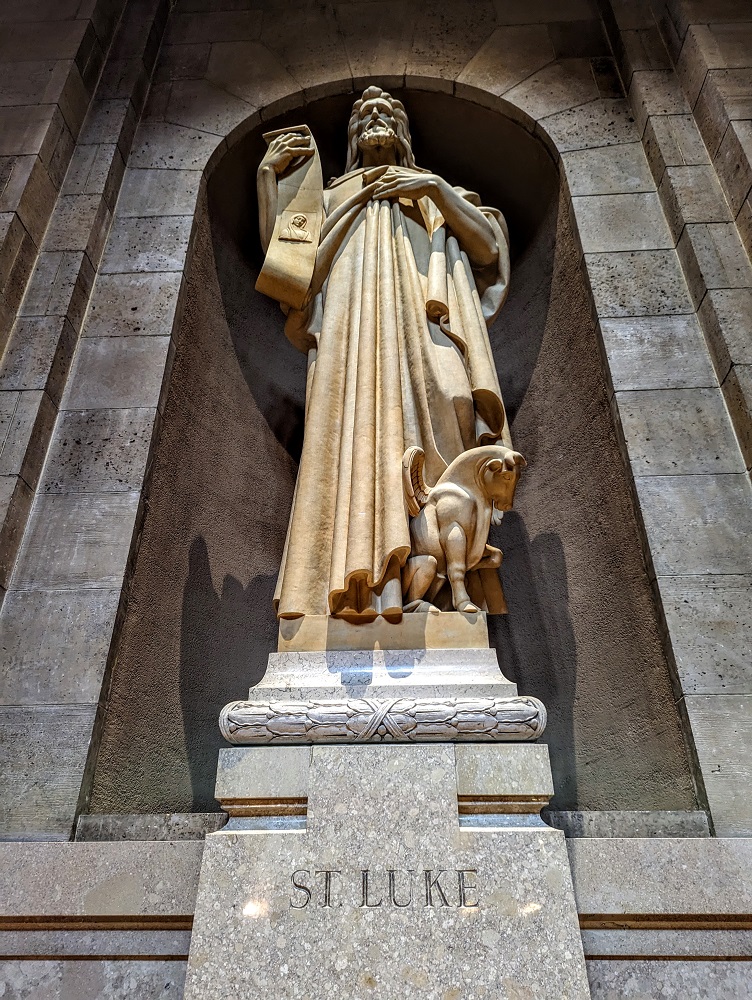
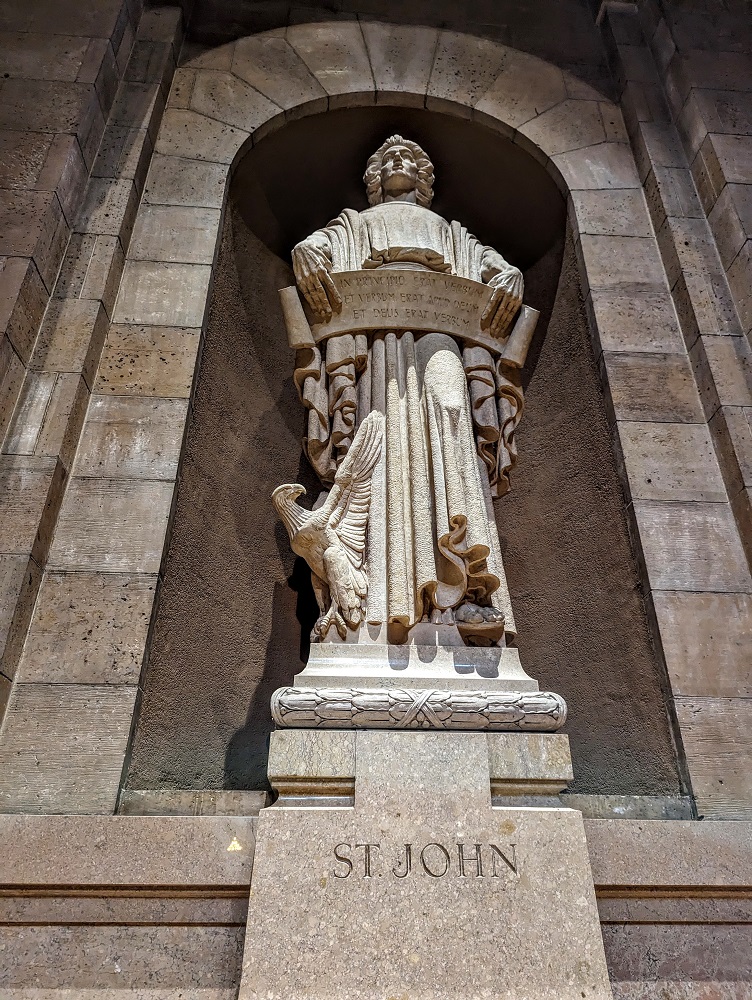
I mentioned earlier that the cathedral was built from 1906-1915. There have been cathedrals on the site for longer than that though. The first was dedicated in 1841, then a larger cathedral replaced it a decade later. Due to the ever-increasing population of St Paul, a third, larger cathedral was built a few years later before the latest cathedral became the fourth – and currently final – cathedral about 50 years after that.
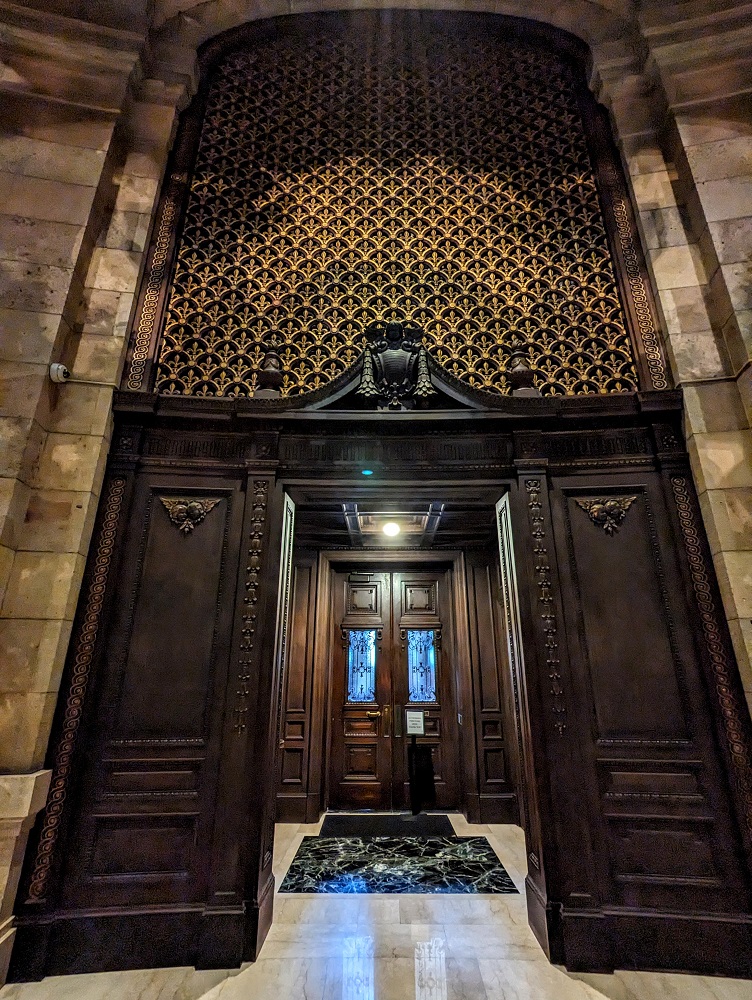
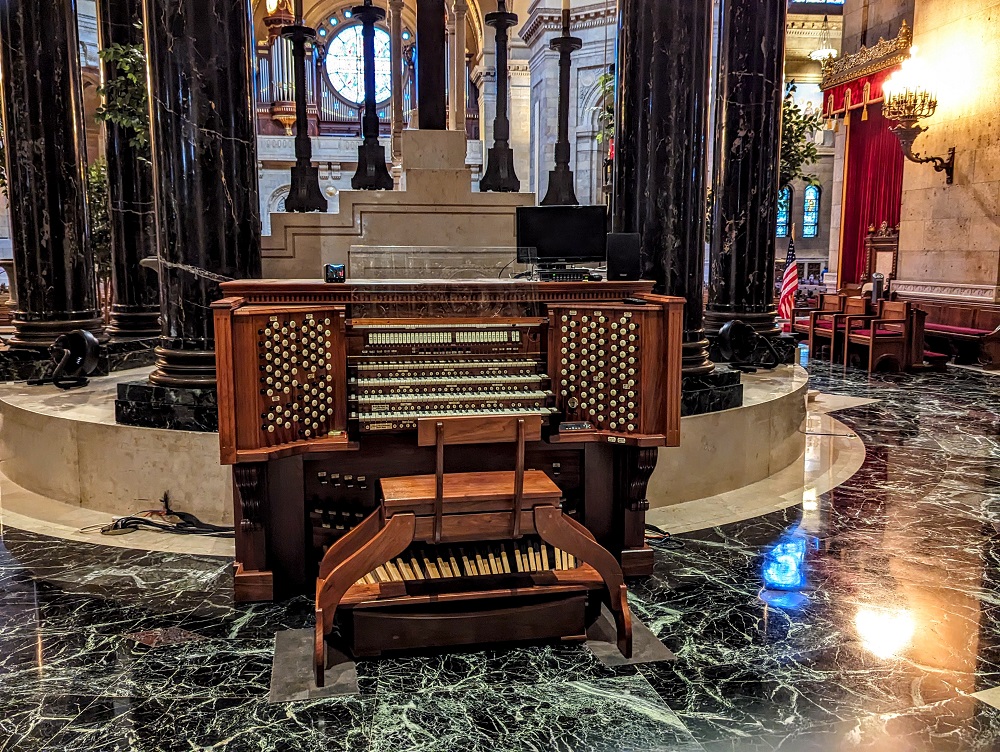
It was nice having Jim give us a tour as we learned and noticed so many things that we would’ve otherwise missed. For example, he pointed out that there were a series of bronze grilles surrounding the back of the altar area; at the top of these you can see various important scenes from Paul’s life recounted in the Bible.
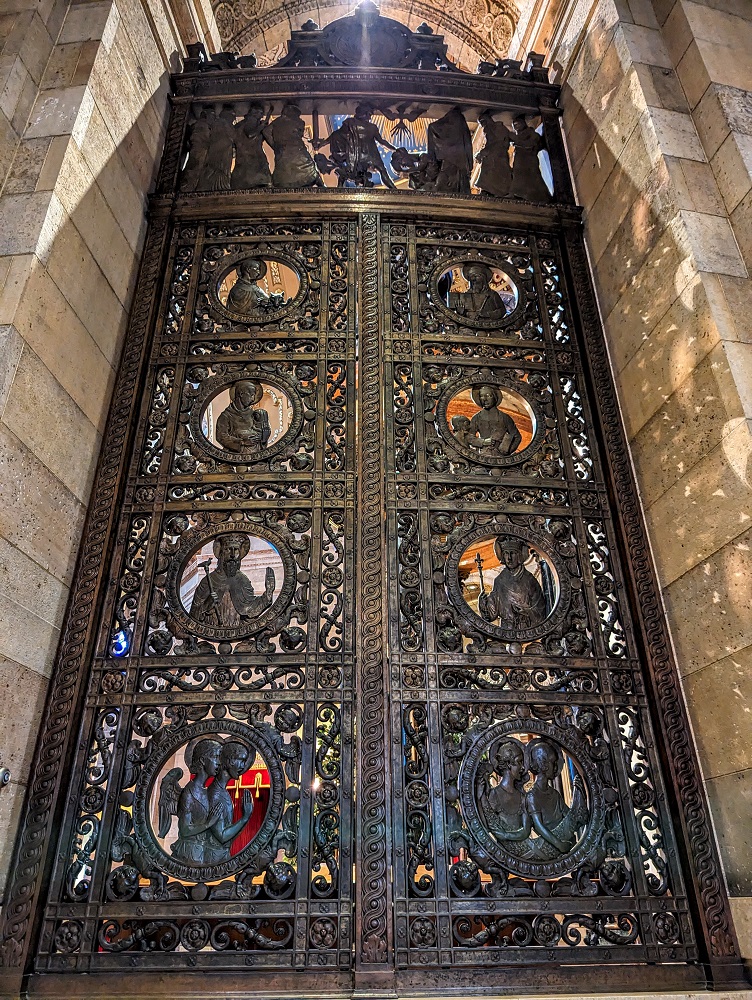
Although it’s labeled, we likely wouldn’t have noticed a stone in the wall which was from the dungeon where Joan of Arc was held.
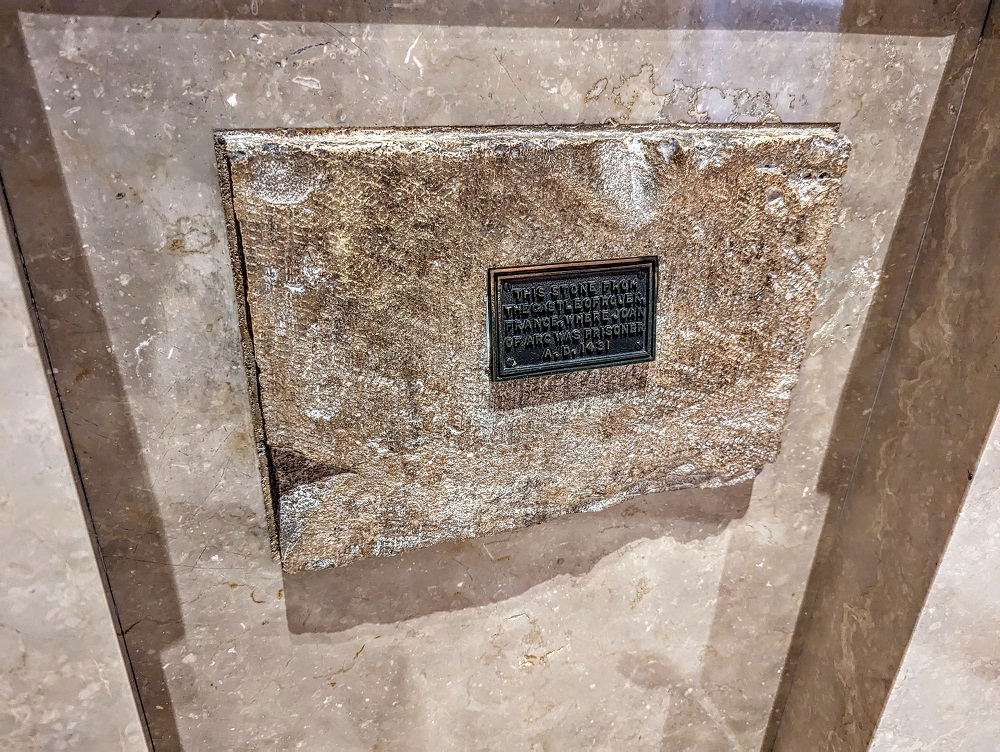
Something he highlighted were some of the wave design elements incorporated around the building.
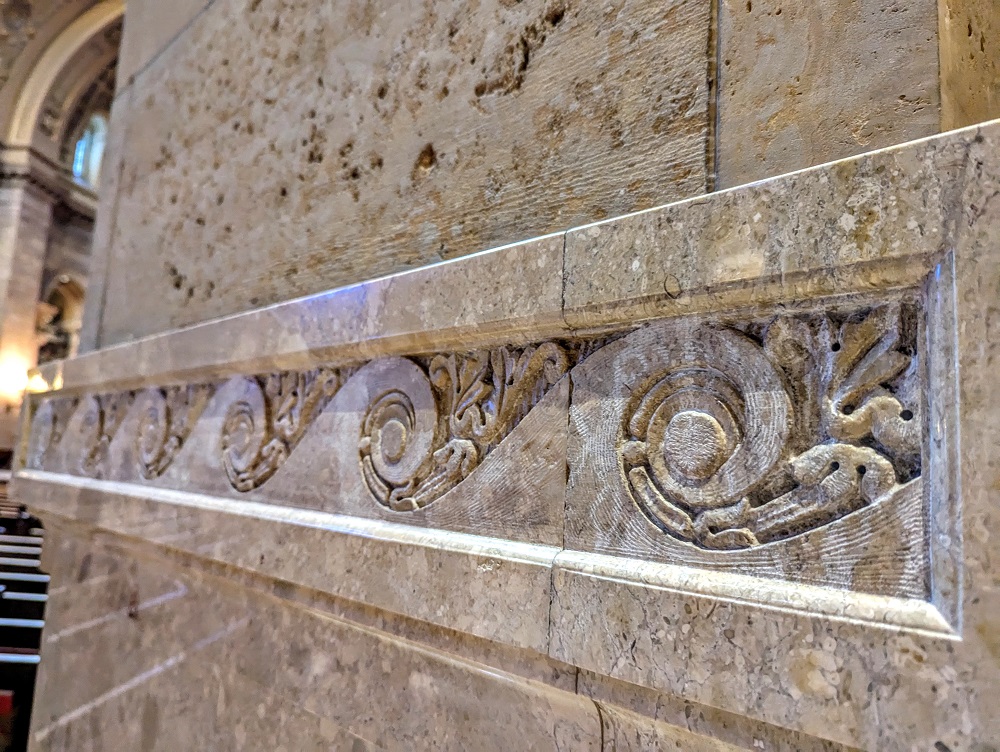
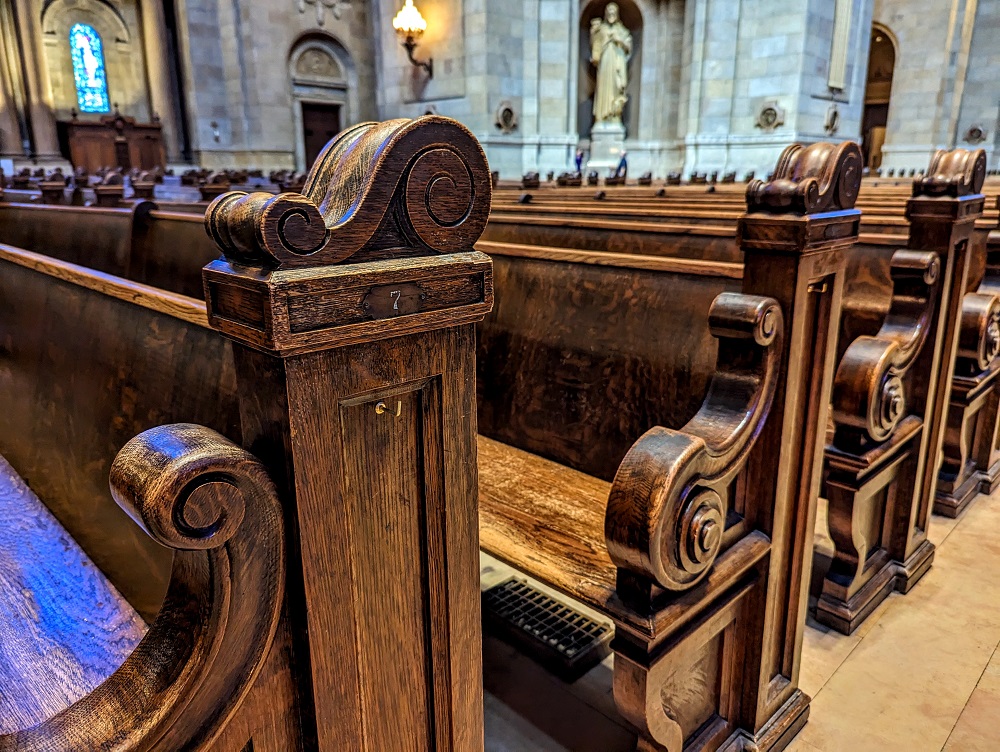
One of the most fascinating things he pointed out was on a stained glass window. There are 24 stained glass windows in the cathedral and on at least one of them there’s a pelican which is a symbol of the Eucharist (also known as Communion or the Lord’s Supper – i.e. taking bread and wine). Apparently there’s a legend in early Christianity that a pelican mother hurt herself in order to bleed, so that she could feed her babies and keep them alive. This is regarded as analogous with Jesus’ sacrifice by Catholics.
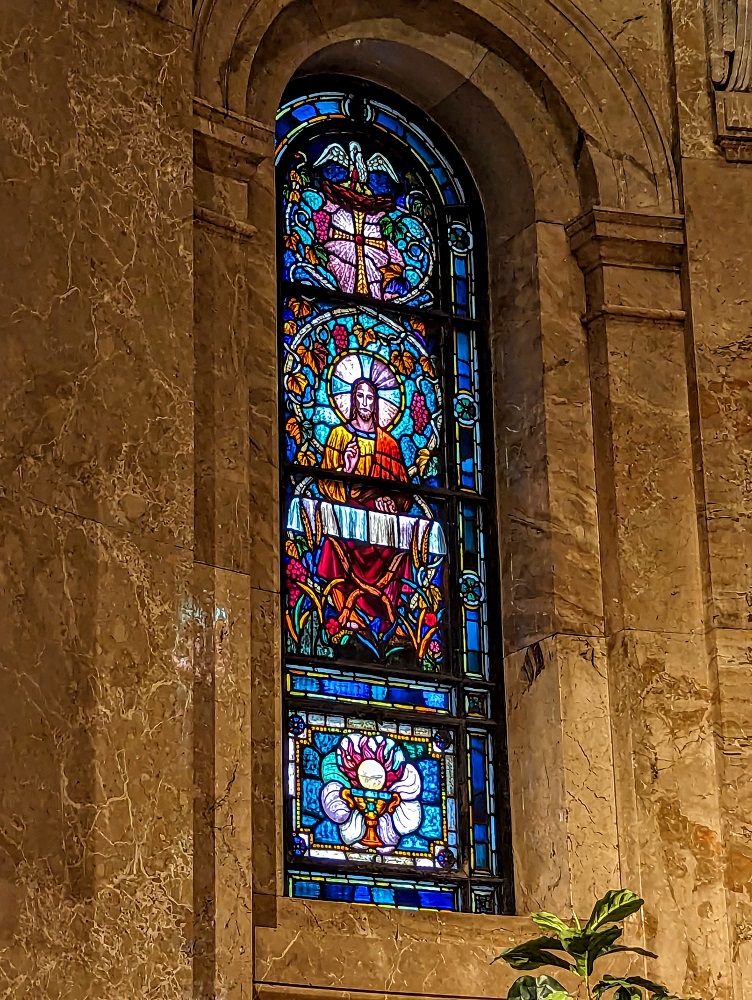
Jim also shared a piece of trivia that I hadn’t known. The bishop’s throne is called a cathedra which is where the word cathedral comes from as it’s the building that holds the bishop’s throne.
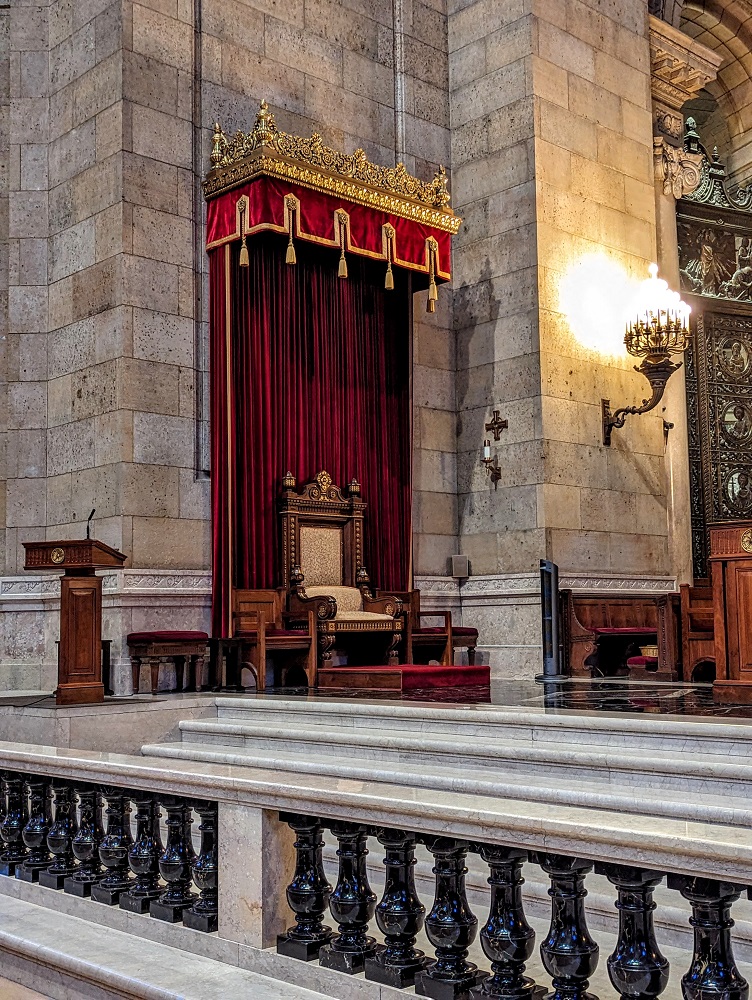
The Cathedral of St Paul has six confessionals, although only three tend to be used.

In one of the chapels there’s a reproduction of Michelangelo’s Pietà. The original statue is in Saint Peter’s Basilica in Vatican City, with this reproduction being cast from that and is one of only four reproductions of it.
The marble statue depicts Mary holding Jesus after he was taken down from the cross.
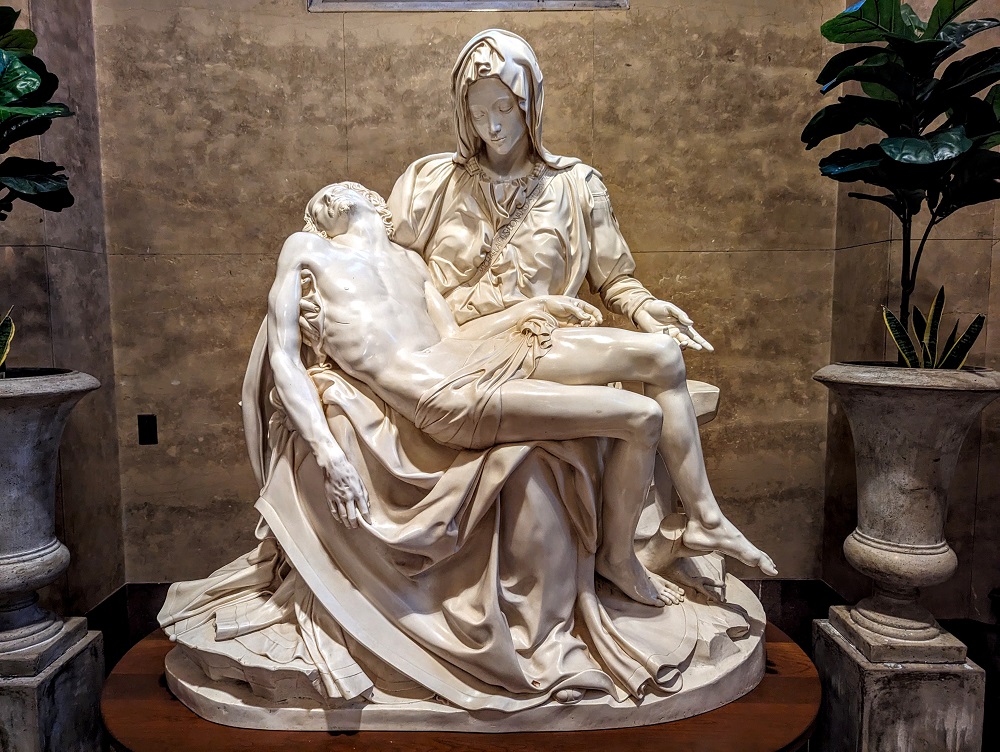
It’s also the only piece of art that Michelangelo ever signed.
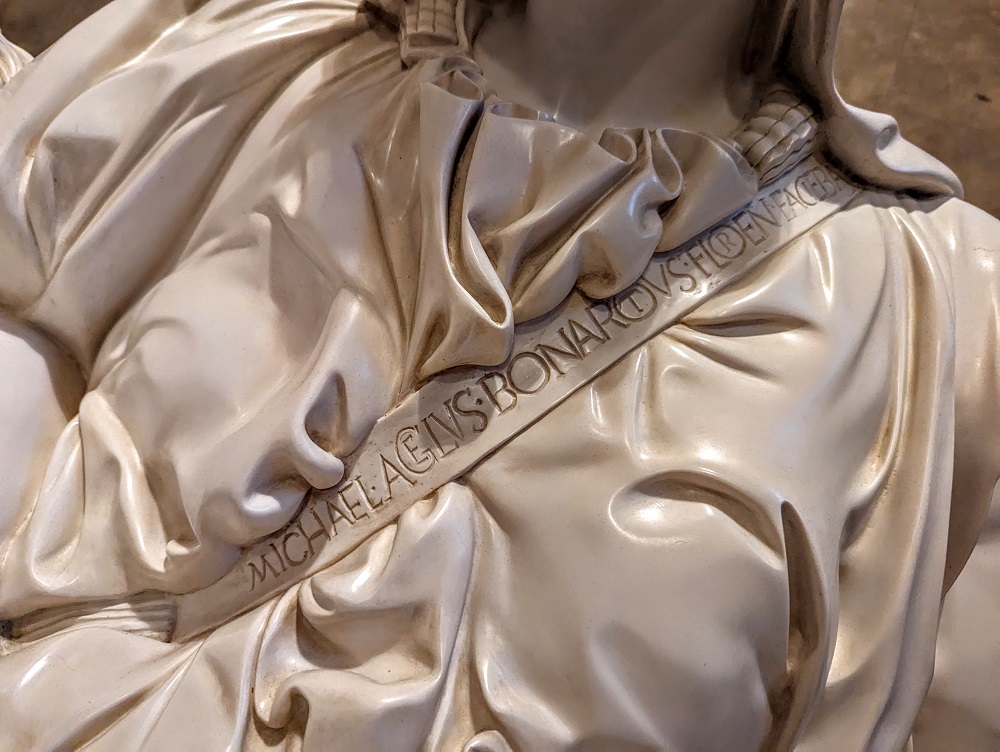
Here are a few other photos we took during the tour.
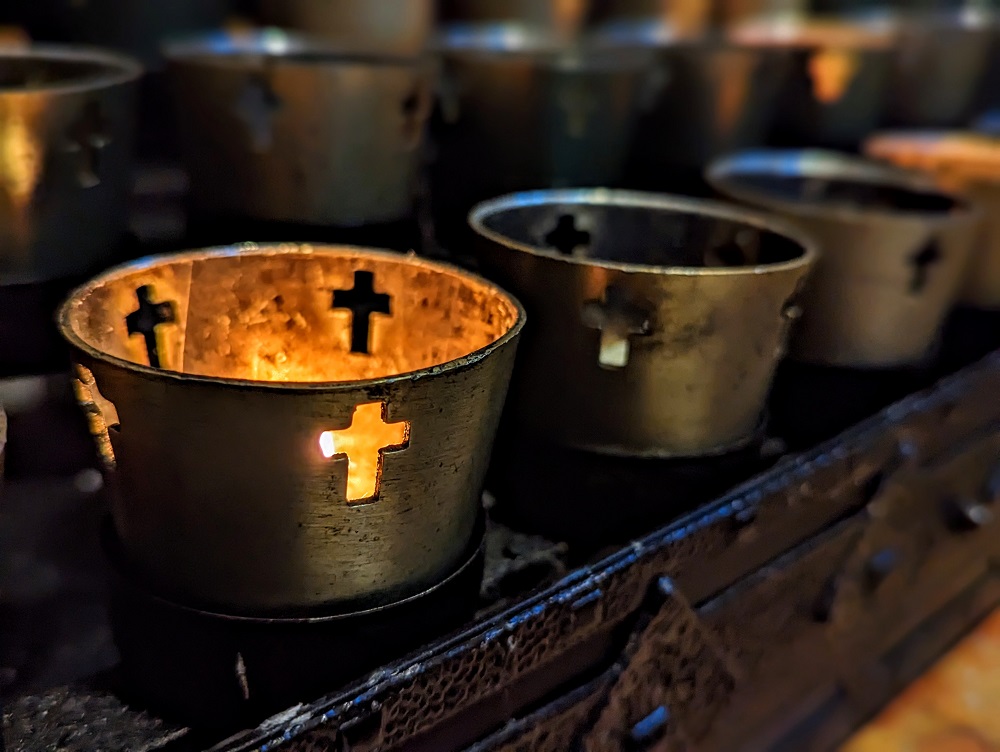
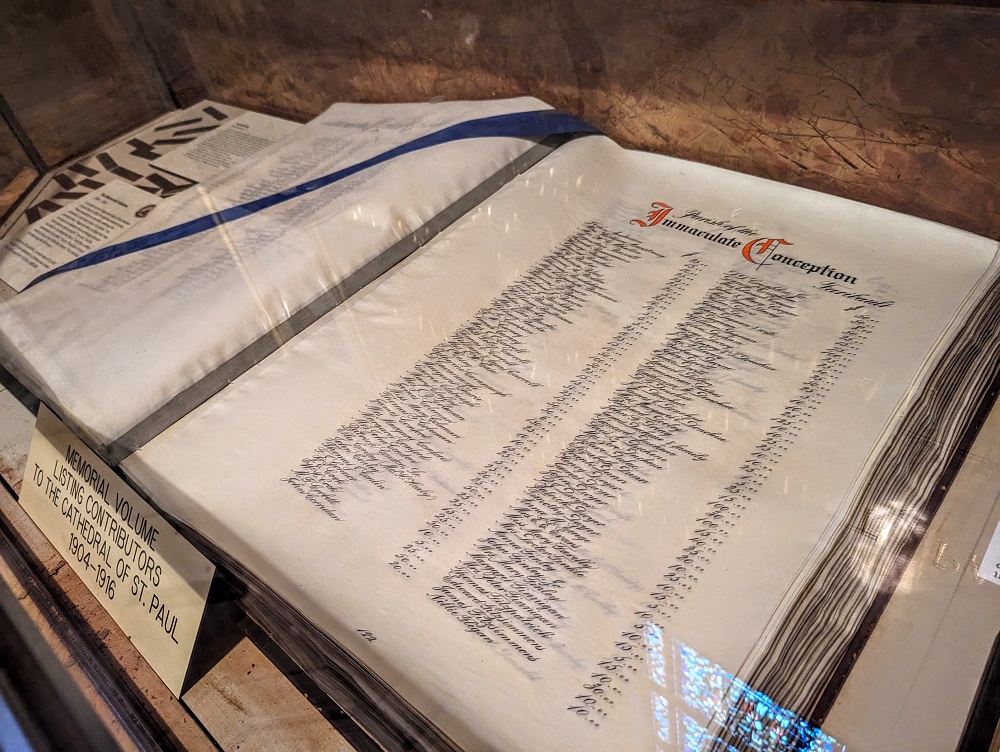
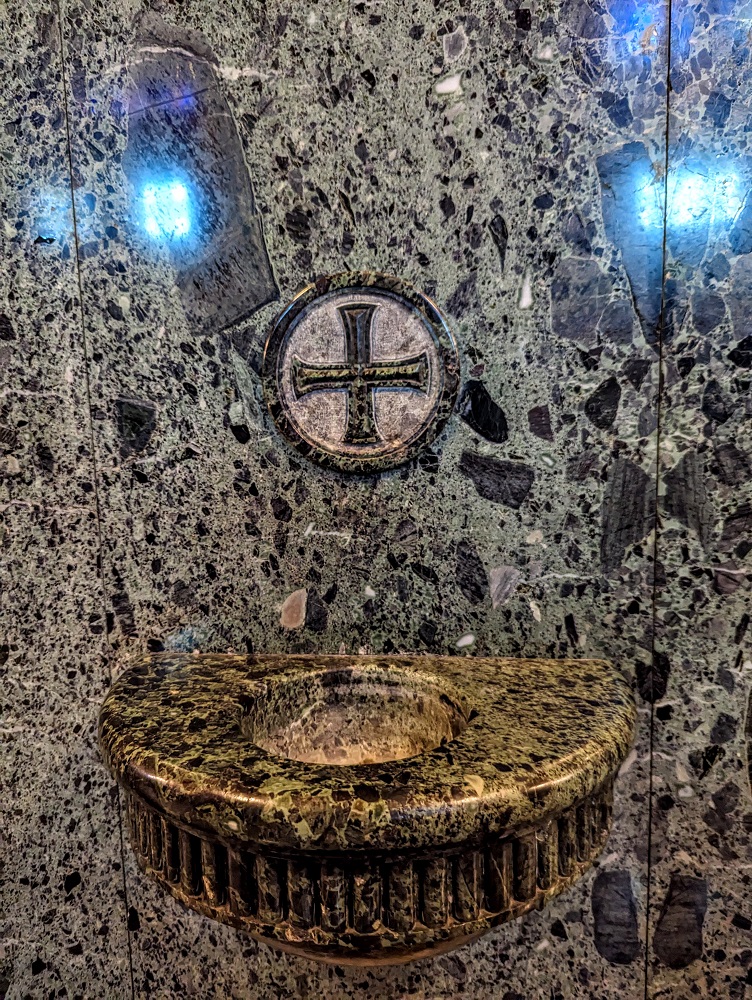

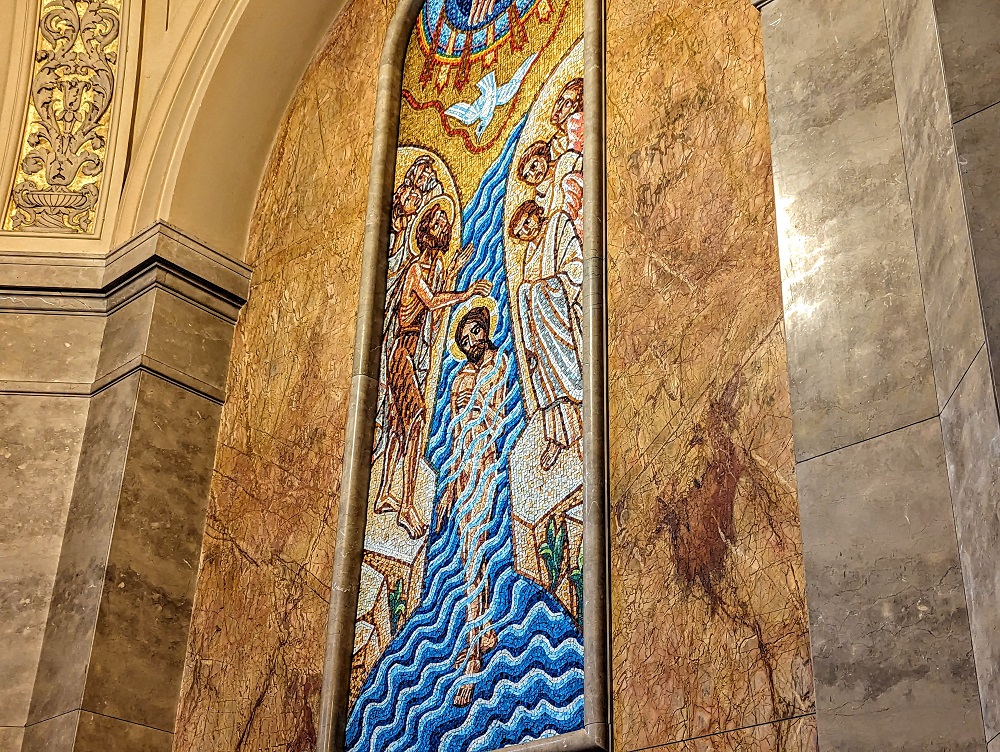
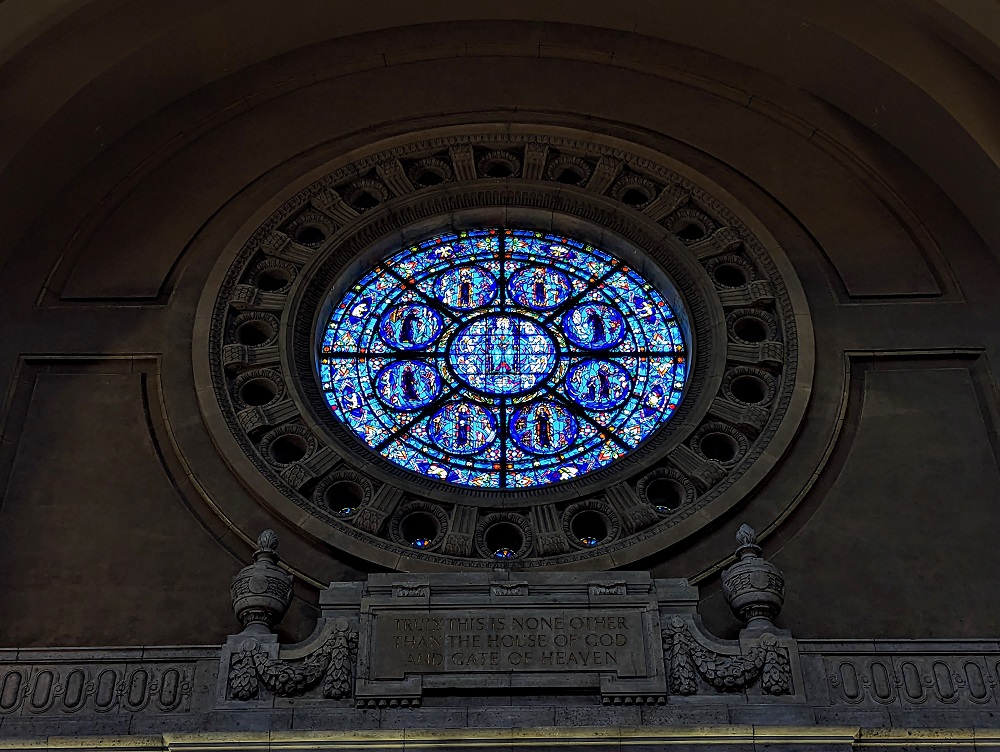
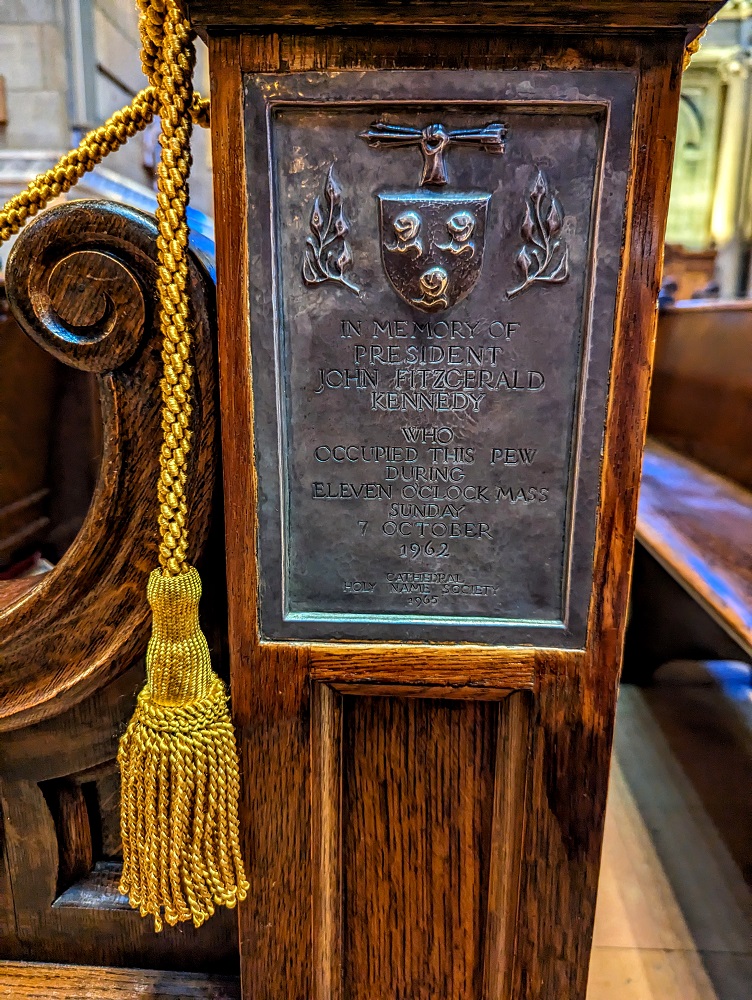
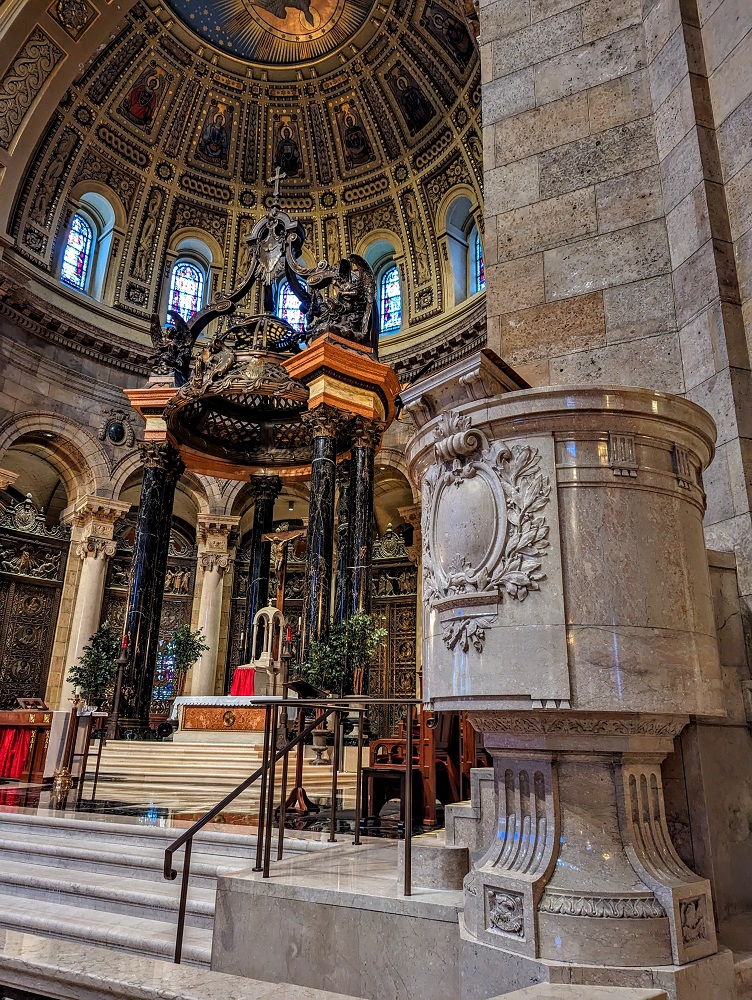
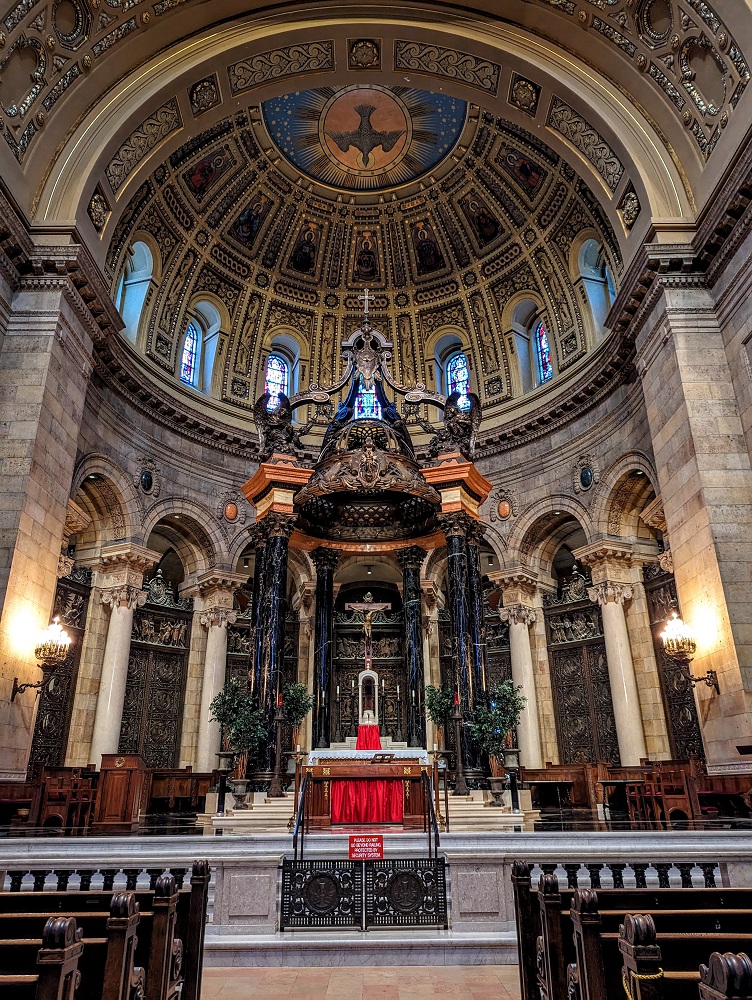
Thanks again to Jim for giving us a tour of the Cathedral of St Paul. If you’d like to do a tour there, you can do a self-guided tour or a guided one. They recommend booking a guided tour in advance – you can find the details here. There’s no admission fee and tours are – in theory – free, although there is a suggested donation of $5 per person.
Gosh, loved the photos and descriptions! We took a tour about 5 years ago. Beautiful place. Thanks for spending the time writing about this in detail. So interesting, makes me want to visit again!
Thank you! I’m glad you enjoyed your visit there too 🙂